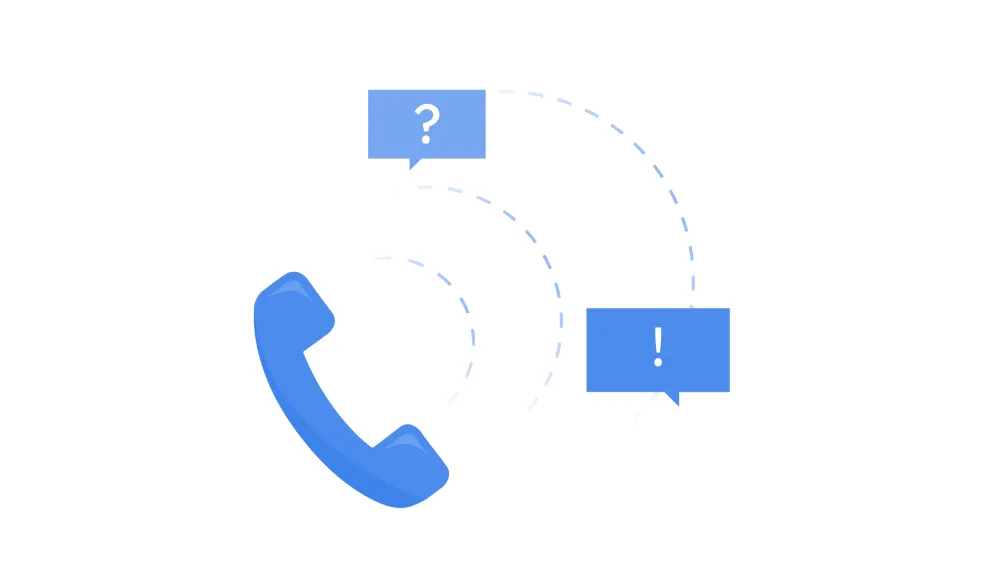Why is cold calling so important?
Cold calling forces you to learn firsthand what prospects think of your product, and the information you gather during cold calling can be extremely helpful when trying to understand your market. With this information, you can adapt your product to better serve your prospects' needs and adjust your messaging to better speak to their pains and hopes.
Turning a call with a cold lead into a beneficial, productive conversation, however, isn’t easy. Anytime you’re trying to speak to your audience through an interruptive channel like this one, you’ll need to be extra sure that you’re speaking the right message to the right person and getting them the right information in the small window of time you have to get their attention.
Here are some essential tips to keep in mind before starting your B2B SaaS cold-calling journey:
DON'T: Never ask who you're speaking with
Never ask the prospect this "Hey, is this X?" By asking who you're speaking with, you immediately communicate to the prospect that you're not sure who you're calling. Big mistake!
Be confident and say something like, "Hey X, this is Y." They'll let you know if you're not talking to the right person. There is no need to ask.
Start your conversation with confidence! I highly recommend watching this great video of how to cold call by Patrick Dang.
DO: Use personalization in the opener of your B2B cold calls
When speaking with a prospect, personalization is an excellent attention grabber! Because you're not just approaching a company; you're approaching a person. It can be easy to forget this when you’re trying to acquire a company as a client, but understanding that you need to talk to them as people is essential to a successful sales call.
Try saying something like:
"Hello (first name), I noticed you liked a few posts on LinkedIn about fleet management and had a quick question about it. It's ( sender’s name) at (company name) Do you have a minute?"
Add some details that show you’re aware of their situation, interests, and needs can help lead to a great conversation. Use this guide to personalization from Instapage for ideas on gathering more insights on your prospects.
DO: Be conscious of your tone of voice
- Speed: Reduce your speed; speaking too quickly makes you sound insecure.
- Jargon: Remove marketing/sales jargon from your vocabulary. Speak to your prospect in the same way that others in their industry do.
- Smile while speaking: When you smile, your tone changes. It is easily perceived by the prospect and sets the tone for the rest of the conversation.
- Use pauses between sentences: Pausing is a skill that takes time to master. Salespeople tend to fill every gap of silence. However, pausing allows you to truly listen to what the prospect is saying so you can ask better questions and gives the prospect more room to provide you with additional information.
DON'T: Never talk badly about your competitors
In B2B sales, where trust is essential for getting buy-in on often very large deals, speaking negatively about a competitor on a cold call is not advisable as it may cause the prospect to lose trust. It portrays you as pushy and untrustworthy.
Recognizing your competitors' strengths and using them to position your product within that context is often preferable. Try out our competitive research template as a starting place to help you gain those insights if you’ve not yet conducted or organized thorough research in this area.
Knowing how to position yourself is key to keeping the conversation away from negative competitive talk—it's about what makes you unique not what makes them worse.
An example of a better approach: "Yes, Company X is reliable. I think you might be interested in a few things we do differently when it comes to solving (insert problem)."
DO: Leave a voicemails after each call
Leave voicemails for your high-value prospects, such as those with ideal titles, those who open your email multiple times, and those from your target B2B companies.
People will most likely not call you back. And that's fine! The true value lies in name recognition for the next time you call or send an email.
- Prioritize calling people who have opened your email (i.e. those who have opened them more than 5 times), or use the number of clicks as a signal!
- Check people's LinkedIn recommendations to see what name people go by. Sometimes a person's name is listed as Alexander, but they might go by Alex.
- Lose the 'professional/sales voice'. Talking too fast and too formally makes you sound less credible and nervous. Speak clearly, casually, and at a normal pace.
- Unsure how to pronounce a name? Check LinkedIn first, then use a website like PronounceNames. Also, see how people say their name on their voicemails and note it down.
Next steps
Cold calling is an efficient outreach tactic that can help you engage with companies that you want as well as convert them into your clients. To succeed in cold calling, you need to be more human and use all the personalization that you can to build a solid relationship.
SMILE and DIAL!
No meeting in sales is more important than the first pitch. What can you do to give your team the highest chance of success?
READ ARTICLE
Your SaaS sales demo process is the first touchpoint with your prospect. Improve it with this step-by-step guide that will unlock higher conversion rates.
READ ARTICLE
